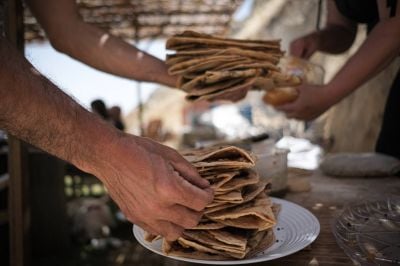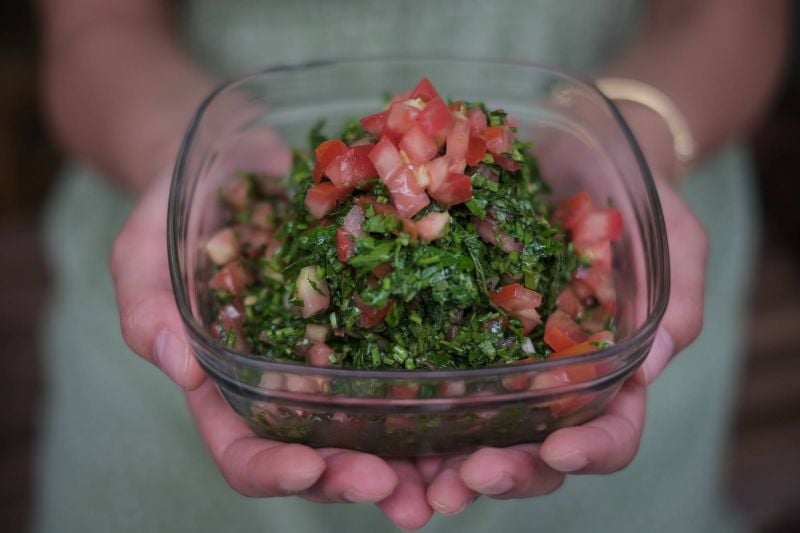
A bowl of tabbouleh. (Credit: João Sousa/L'Orient Today)
Fragrant, tangy and fresh, tabbouleh is a dish that is glorious in its simplicity.
To the dismay of fattoush lovers, tabbouleh might just be Lebanon’s favorite salad.
Beloved TV personality, Chef Ramzi Chueiri, recently admitted to L’Orient Today that it is indeed his favorite salad, and he holds the Guinness World Record for the world's biggest tabbouleh dish ever made. He says tabbouleh is the dish that best represents Lebanese cuisine.
Kareem Shuhaibar, known on Instagram as the voice note chef, shares the sentiment.
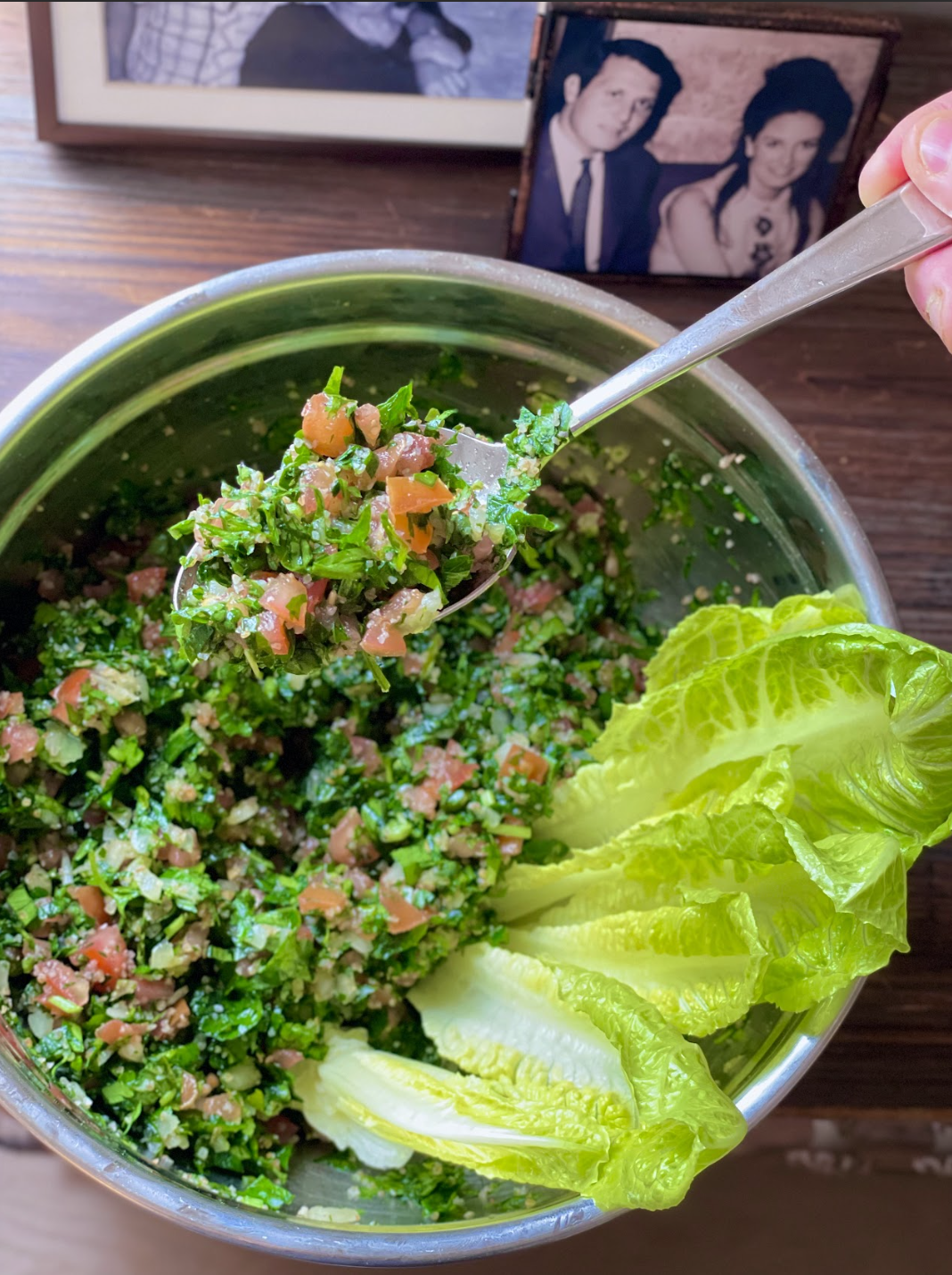 An essential part of the Lebanese table, the word tabbouleh is derived from the Arabic word "tabbil," meaning to season. (Courtesy of Kareem Shuhaibar)
An essential part of the Lebanese table, the word tabbouleh is derived from the Arabic word "tabbil," meaning to season. (Courtesy of Kareem Shuhaibar)
“It’s a bit of an obsession with tabbouleh. I’m a fanatic,” he admits to L’Orient Today. “I think it’s the most beautiful salad in the world and it's so incredibly healthy.”
An essential part of the Lebanese table, the word tabbouleh is derived from the Arabic word tabbil, meaning to season.
And seasoned it is, with olive oil, salt and lemon. Some people add pepper, others add spices like cinnamon. Sometimes, in Lebanon’s mountainous villages, husrom (sour grape juice) or pomegranate molasses replace the lemon juice. Some people add mint and others add cucumber.
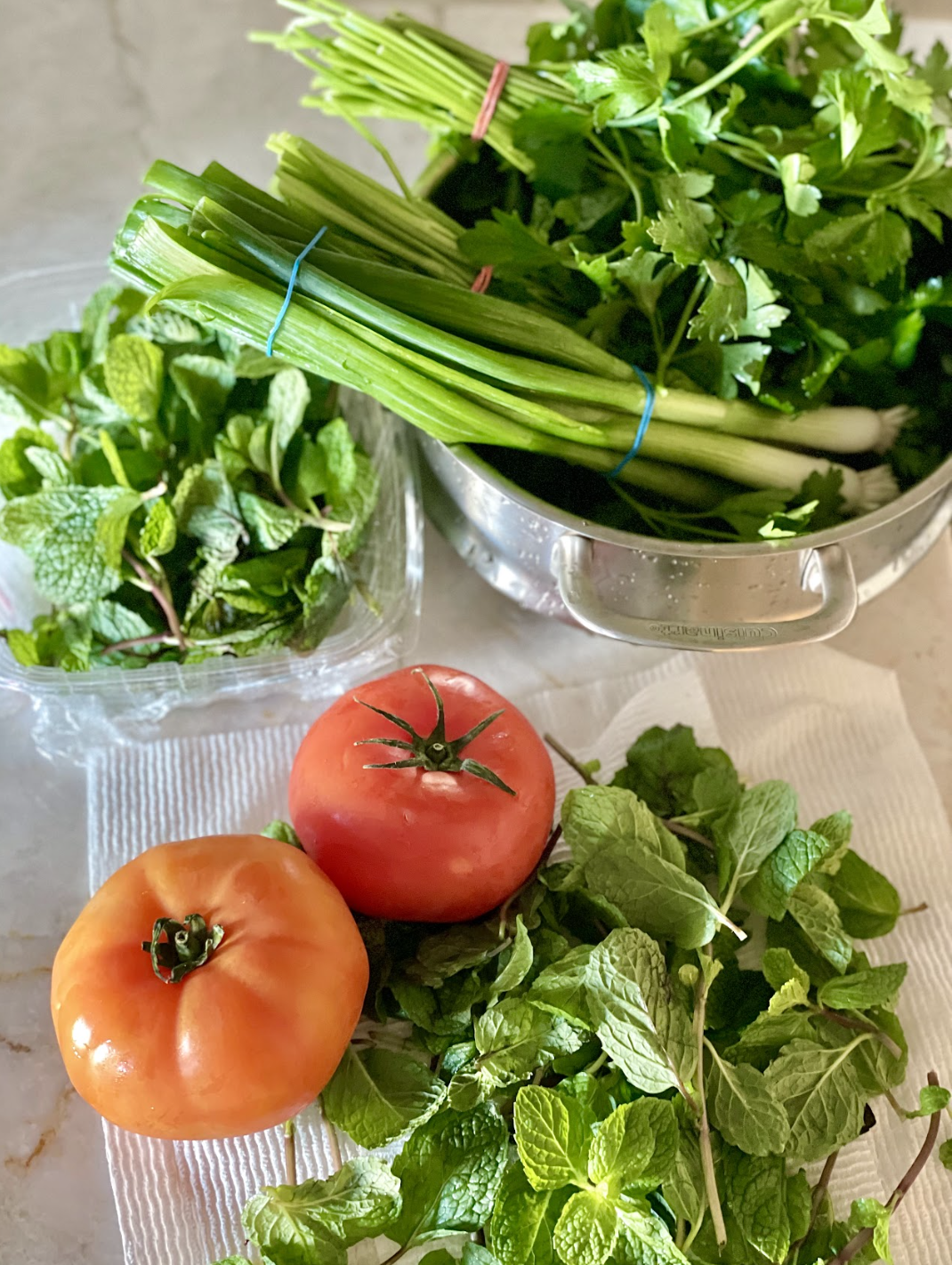 Tabbouleh is only made from the freshest ingredients. (Courtesy of Kareem Shuhaibar)
Tabbouleh is only made from the freshest ingredients. (Courtesy of Kareem Shuhaibar)
“When I look at tabbouleh, it's the colors of Lebanon as well. There’s poetry in the salad,” Shuhaibar professes. It’s something he says he “just doesn’t find with fattoush or any other salad.”
“There’s even research proving that there are powerful chemicals in parsley that can literally reduce toxins from the wildfire smoke that we’ve been inhaling in the Northeast,” Shuhaibar exclaims, referring to the wildfires that have ravaged Canada and shrouded New York City, where he currently resides.
Setting aside subtle local variations from one corner of Lebanon to the other, the core ingredients of a classic tabbouleh are the same: fresh parsley, tomatoes, fine burghul and, in most cases, onion. Fresh local ingredients at their best.
Parsley is an endemic herb in Lebanon, available in abundance.
Burghul, documented as far as the Roman period, is the product of a technique developed to preserve wheat after the annual harvest. It also adds substance to the salad which was often eaten as a meal on its own.
Tomatoes, however, are another story.
‘Tiz al sheitan’
Though it may come as a surprise to some readers, tabbouleh was made without tomatoes until the second half of the 19th century.
Tomatoes, now a core element of tabbouleh, are native to central and South America. Their spread around the world began with the Spanish conquistadors in the 1400s.
In the Levant, “tomatoes came from the British who brought it initially to Aleppo” in the 19th century, explains Tylor Brand, Middle East historian at Trinity College Dublin.
“When people would see tomatoes, they weren’t used to them, and they would be freaked out by them. It was like this in Europe too,” Brand adds.
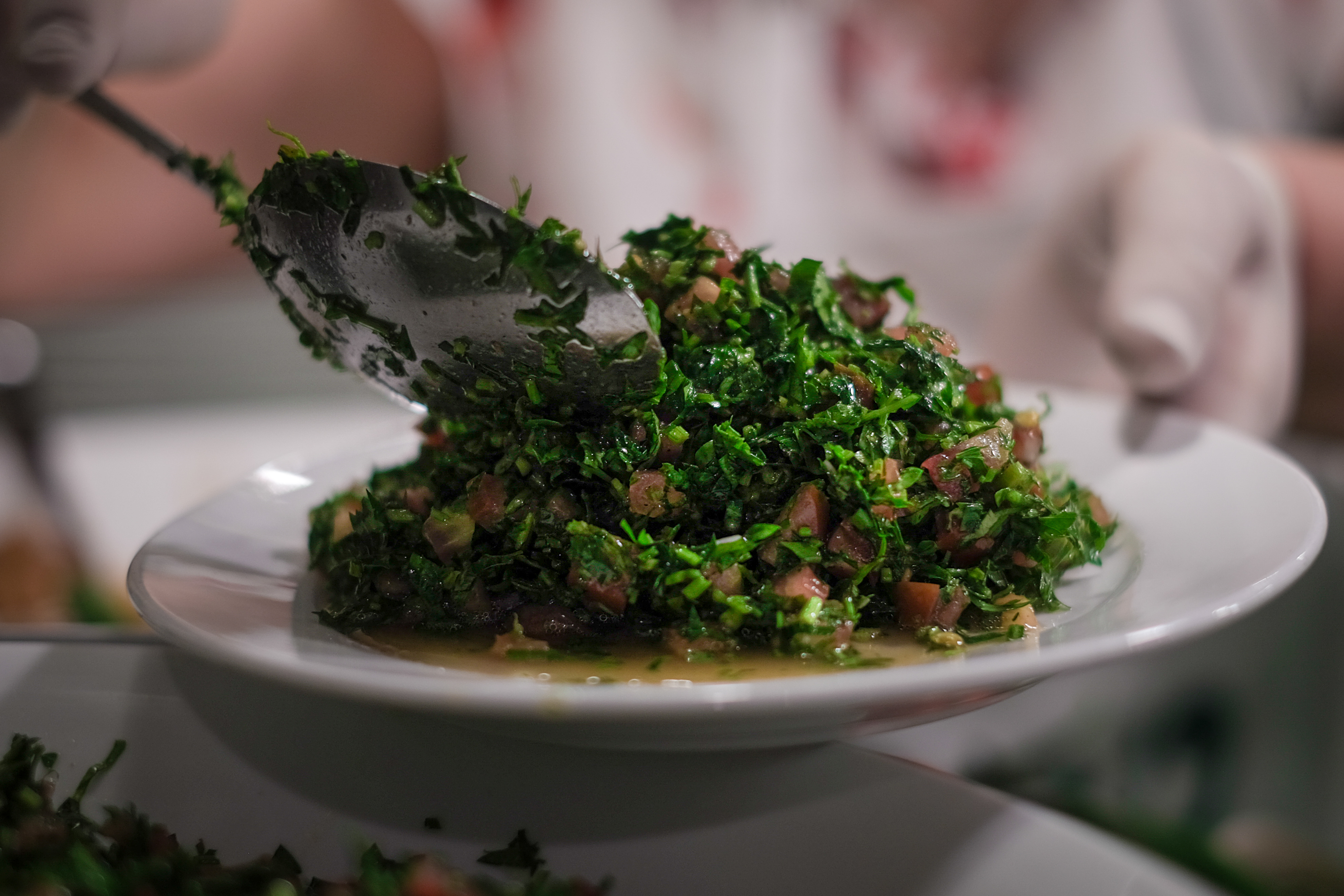 Georgina's tabbouleh. (Credit: João Sousa/L'Orient Today)
Georgina's tabbouleh. (Credit: João Sousa/L'Orient Today)
In his book From Arab Renaissance to Apostasy (من النهضة إلى الردٌة), Syrian writer Georges Tarabishi explains that, when tomatoes reached the Syrian city of Aleppo at the end of the 19th century, residents of the city refused to consume or cultivate them, because their red color contradicted the idea that they were vegetables (khodra, “greens” in Arabic).
“In Aleppo, people would walk by [tomatoes] and say the shahada [Islamic oath] as a way of protecting themselves,” Brand chuckles.
Round and lasciviously red, people once believed they were poisonous and some even believed them to be a dangerous aphrodisiac.
Thus, locals called them “satan's backside” (tiz al sheitan) and Aleppo’s Mufti even banned their consumption, writes Tarabishi.
This ban did not last long, however. People soon got used to them, and the region's tomatoes became known as baladiyya (local).
A reminder of their foreign origin survived in the Levantine Arabic word for tomatoes, banadura, which is a corruption of the Italian pomodoro.
Tomatoes now claim an important place in Levantine cuisine. Most Lebanese tabekh (home cooking) contains tomato in some form or the other, and one could hardly imagine tabbouleh without it.
Memories
To sample some tabbouleh ourselves, L’Orient Today took a trip to Tawlet Souk el Tayeb restaurant in Beirut’s Mar Mikhael district where, each day, a cook from a different region of Lebanon serves their special recipes to city-goers hungry for authentic home-cooked food.
We were greeted by Georgina Bayeh from Zgharta who has been cooking at Tawlet since the initiative's inception in 2009.
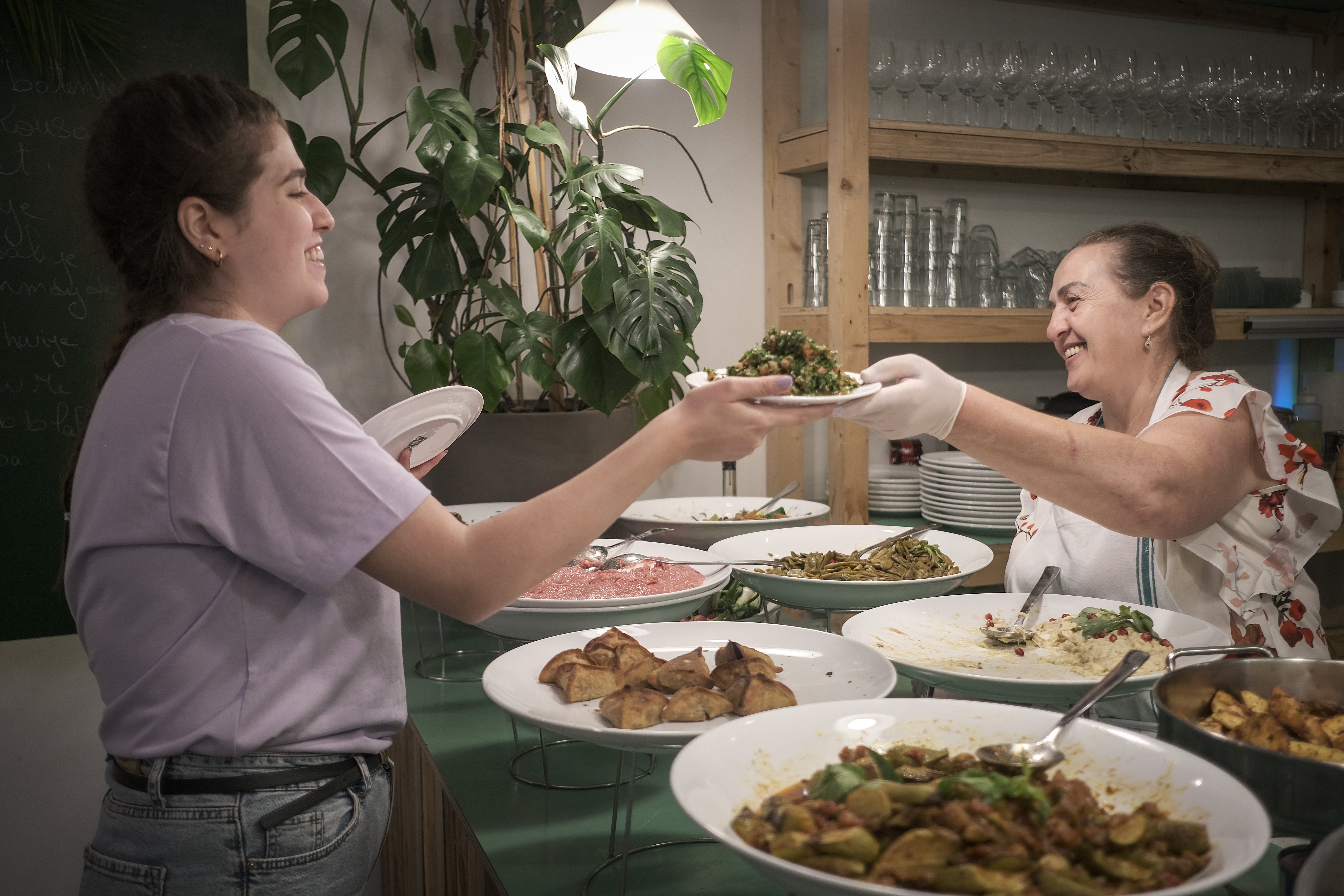 Georgina serving her tabbouleh at Tawlet Souk el Tayeb. (Credit: João Sousa/L'Orient Today)
Georgina serving her tabbouleh at Tawlet Souk el Tayeb. (Credit: João Sousa/L'Orient Today)
“Tabbouleh is tabbouleh. Everyone makes it the same and it varies according to personal tastes. For example, I like it extra sour. I add extra lemon,” giggled Georgina as she filled a plate of the special salad.
Besides the tabbouleh that we all know and love, there are local and seasonal variations of the dish.
“There is something called tabboulet el shetteeh [winter tabbouleh],” explains Tawlet Souk el Tayeb founder Kamal Mouzawak. “In winter [back in the day] we didn’t have parsley, so in the mountains, we make it in a completely different way, with sprouted lentils and boiled rough burghul to give it a bit of heat.”
In the end, it really comes down to what you're used to.
“We eat it with malfouf [cabbage] or romaine lettuce. Or in the summer, my grandma would pick fresh grape leaves and scoop it,” Shuhaibar reminisces. “Everyone's tabbouleh is their tabbouleh and I don’t think that they want to touch it because to touch it … to modify it, is to modify their memories.”
